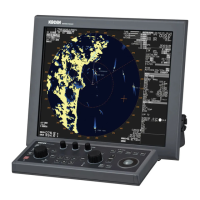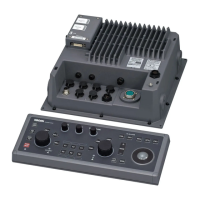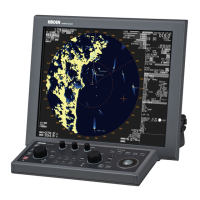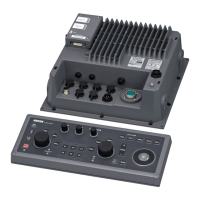Do you have a question about the Koden MDC-7910 and is the answer not in the manual?
Describes the layout and key information areas of the main radar display screen, including various corners and data sections.
Details the function of each key and knob on the radar's operating unit for user interaction and control.
Explains how to access and navigate through the radar's menu system for settings and functions.
Procedure for turning the radar system on and off safely, including preheating and shutdown.
Optimizing performance by adjusting gain, tuning, and suppressing sea/rain clutter for clear target detection.
Configuring display modes, stabilization, and colors for effective navigation and target monitoring.
Using Range Rings, VRM, EBL, and PI for accurately measuring target distances and bearings on the radar display.
Methods for suppressing sea and rain/snow clutter to improve target visibility in adverse weather conditions.
Setting up fan-type alarm areas to detect targets entering or leaving specific zones for collision avoidance.
Defining custom map areas for alarms when targets enter or leave the specified zones on the radar display.
Creating guard zones to trigger alarms when tracked targets or AIS targets enter protected areas.
Setting up alarms to alert when the ship crosses a predefined navigation line for safety.
Accessing and reviewing current alarm lists and historical alarm data for system monitoring and troubleshooting.
Configures target vectors, alarms, display types, acquisition, and association for AIS and TT targets.
Managing AIS data display, symbols, target counts, filtering, and alarms for effective target identification.
Utilizing TT/ARPA for collision avoidance by generating vectors, setting CPA/TCPA, and acquiring targets.
Displaying parallel lines to the heading on both sides of the ship for navigation safety and boundary definition.
Saving and restoring radar settings to internal memory or SD card for data safety and recovery.
Procedures for diagnosing common faults like no alarm sound or non-operational panel keys using built-in tests.
Troubleshooting issues with TT (ARPA), AIS display, radar video, and serial input using diagnostic tools.
Diagnosing frozen displays, antenna status, and understanding various alarm messages for fault identification.
| Brand | Koden |
|---|---|
| Model | MDC-7910 |
| Category | Marine Radar |
| Language | English |











